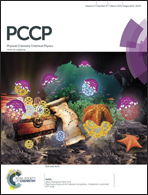On the crumpling of polycrystalline graphene by molecular dynamics simulation
Abstract
Crumpled graphene has been emerging as a valuable component for a variety of devices such as supercapacitors or hydrophobic surface coatings due to its geometric change from a 2D to a 3D structure accompanied by changes in its material behavior. As polycrystalline graphene is easier to produce than pristine graphene, certain applications of crumpled graphene may be better suited to polycrystalline graphene. However, the crumpling process of polycrystalline graphene and its relevant mechanical properties remain poorly understood. Here we employ molecular dynamics simulation to model the behavior of polycrystalline graphene under geometric confinement and elucidate the effect of grain size, with a focus on the mechanical stabilizing mechanisms and properties of the crumpled structures in comparison to pristine graphene. Simulation results show that crumpled polycrystalline graphene exhibits a slight negative correlation between average grain size and measured hardness, bulk modulus, and crumpled size. As the size of the grains decreases, the crumpled structures formed are harder and smaller, with sharp edges caused by the grain boundaries. These findings provide evidence towards the feasibility of using polycrystalline graphene in place of pristine graphene in applications involving crumpled carbon structures.


 Please wait while we load your content...
Please wait while we load your content...